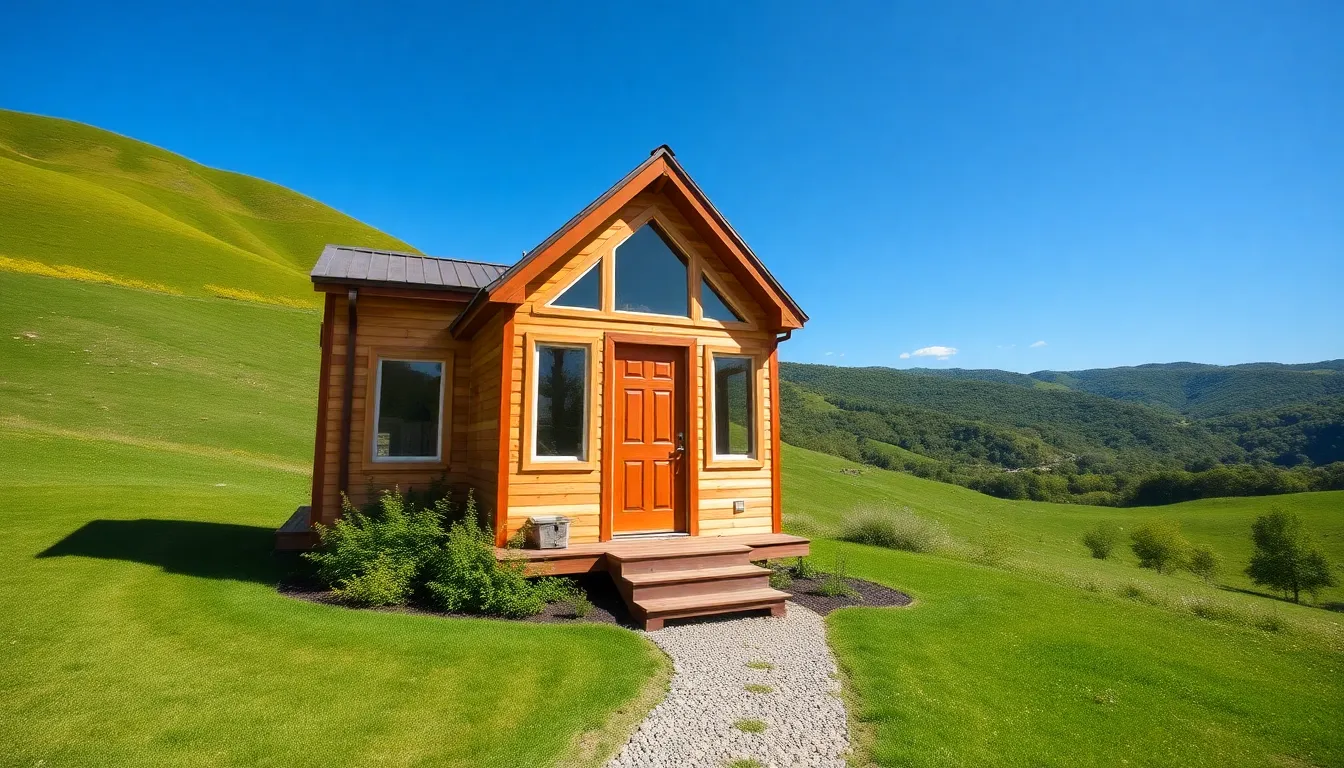Imagine stepping into a space that feels both cozy and spacious, where every square inch is meticulously designed for maximum comfort. Welcome to the world of park model tiny homes. These charming abodes aren’t just for the tiny home enthusiasts, they’re a practical choice for anyone looking to downsize, simplify their life, or embrace a more sustainable lifestyle. This guide will jump into everything you need to know about park model tiny homes, blending expert insight with a sprinkle of humor to keep things interesting. So, buckle up.
Table of Contents
ToggleWhat Are Park Model Tiny Homes?

Park model tiny homes are a unique blend of traditional cabin aesthetics and modern design principles. Typically ranging from 300 to 400 square feet, these dwellings are built on a trailer chassis but are meant for semi-permanent or permanent placement in designated parks or privately-owned land. While they share similarities with mobile homes, park models offer a more refined experience, focusing on aesthetics and functionality more than just portability.
Their design allows for efficient use of space without sacrificing comfort. Think of them as vacation homes that can be made into a cozy retreat or even a full-time residence. Often featuring full kitchens, living areas, bathroom facilities, and even multiple sleeping areas, they truly redefine what it means to live small.
Benefits of Choosing Park Model Tiny Homes
Choosing a park model tiny home comes with a wealth of advantages. First and foremost, cost savings are a significant factor. With lower utility bills and maintenance costs, individuals can allocate their funds toward experiences rather than excessive living expenses.
Also, there’s the perk of minimalism. Living in a smaller space encourages a decluttered lifestyle, making it easier to appreciate what truly matters in life. Relationships also flourish in intimate settings, fostering deeper connections with family and friends.
Of course, let’s not forget about environmental responsibility. Park model tiny homes often incorporate eco-friendly materials and energy-efficient appliances, allowing residents to live more sustainably. So, whether it’s financial freedom or a smaller carbon footprint, these homes offer compelling reasons to consider downsizing.
Design Features of Park Model Tiny Homes
When it comes to design, park model tiny homes shine. Often customizable, they feature stylish interiors that make use of every inch. Expect high ceilings, large windows for natural lighting, and open-concept living areas that foster a sense of spaciousness.
Many designs include multi-functional furniture, think beds that convert into sofas, or tables that double as storage units. This clever use of design not only keeps the space functional but also aesthetically pleasing.
Outdoor spaces are also significant. Many park models incorporate porches or decks, providing additional living space for relaxation or entertainment. With options ranging from rustic to modern, there’s a park model home to fit almost every personality.
Living in a Park Model Tiny Home
Living in a park model tiny home can be an exciting adventure. Residents often report feeling a closer connection to nature and their community due to the compact living style. Often located in scenic areas, these homes give homeowners easy access to trails, lakes, and parks.
But, living small does present challenges. Storage can be a tricky subject, but many residents find creative solutions, such as vertical storage or under-bed compartments. Also, social interactions can become more intense in smaller spaces. This often leads to better communication and conflict resolution skills.
Overall, this lifestyle encapsulates the idea of being present and intentional about living.
Regulations and Zoning Considerations
Before diving headfirst into the world of park model tiny homes, it’s crucial to understand the regulations and zoning requirements that come into play. Zoning laws can vary widely between municipalities, which means what’s permissible in one area may not be acceptable in another.
Typically, park models are classified as recreational units and must comply with specific guidelines about size and placement. It’s essential to research local zoning laws and potentially seek advice from real estate professionals or local authorities. This step ensures that your dream tiny home doesn’t become a legal nightmare.
Also, some parks offer specific leases or memberships that come with their own sets of rules to follow. Always review contracts carefully, and don’t hesitate to ask questions.
Cost and Financing Options
The costs associated with park model tiny homes can vary significantly based on size, design, and location. On average, you might expect to pay between $30,000 and $100,000. While it can seem daunting, financing options are available. Many lenders specialize in loans for tiny homes, offering various terms and rates.
Whether you’re purchasing outright or looking to finance, options such as personal loans or RV loans may also be available. It’s wise to shop around to find the best terms that suit your personal financial situation. Also, first-time homebuyer programs may also be relevant, especially for younger buyers.
Sustainability and Eco-Friendliness of Park Model Tiny Homes
One of the standout features of park model tiny homes is their emphasis on sustainability. With a smaller footprint comes a reduced environmental impact, allowing homeowners to live greener without sacrificing comfort or style. Many builders use sustainable materials and install energy-efficient appliances, minimizing energy use and waste.
Also, park model homes often feature greywater systems and energy-efficient heating and cooling options. Also, their compact nature encourages a lifestyle centered around minimal resource consumption. Residents are encouraged to use local resources, further supporting sustainable practices in their communities.






